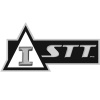A Beginner’s Guide to Mastering Cloud Security
If you’re running a business, you’re likely using cloud technology to store and manage your data. While cloud computing offers numerous benefits, including cost savings and global accessibility, it also introduces critical security challenges that require immediate attention. Cloud security is a sub-domain of computer security and more broadly, information security. It encompasses the technologies, controls, processes, and policies that combine to protect your cloud-based systems, data, and infrastructure.
To ensure your cloud infrastructure is secure, you need to master cloud security. This comprehensive guide to mastering cloud security will equip you with the knowledge you need to tackle threats head-on in the dynamic cloud environment. We’ll start by covering the fundamentals of cloud security, including the various types of cloud services, the threats you need to be aware of, and the security controls you can implement to protect your data. Then, we’ll dive into implementing cloud security, including best practices for securing your cloud environment and ensuring compliance with industry regulations. Finally, we’ll answer some frequently asked questions about cloud security.
Fundamentals of Cloud Security
Cloud computing has revolutionized the way we store, access, and process data. However, it also brings new security challenges that must be addressed to
ensure the safety of your business data. In this section, we will explore the fundamentals of
cloud security that you need to understand to protect your business in the cloud.
Understanding Cloud Models
Before we dive into cloud security fundamentals, let’s first understand the different cloud models. There are three main cloud models: public, private, and hybrid. Public clouds are owned and operated by third-party providers, while private clouds are owned and operated by a single organization. Hybrid clouds are a combination of public and private clouds.
Each cloud model has its own security challenges that you need to be aware of. For example, public clouds are more vulnerable to external attacks, while private clouds are more susceptible to internal threats. Understanding the different cloud models and their unique security challenges is the first step in securing your business in the cloud.
Key Security Principles
Cloud security is based on a set of key principles that you need to follow to ensure the safety of your business data. These principles include:
- Confidentiality: Ensuring that only authorized individuals can access your data.
- Integrity: Ensuring that your data is accurate and complete.
- Availability: Ensuring that your data is available when you need it.
- Accountability: Ensuring that individuals are responsible for their actions in the cloud.
By following these principles, you can ensure that your business data is secure in the cloud.
Risk Management in the Cloud
Risk management is an essential part of cloud security. You need to identify potential risks and implement measures to mitigate them. Some common risks in the cloud include data breaches, unauthorized access, and data loss.
To manage these risks, you need to implement a comprehensive security strategy that includes:
- Access controls: Limiting access to your data to authorized individuals only.
- Encryption: Encrypting your data to prevent unauthorized access.
- Backup and recovery: Implementing backup and recovery procedures to ensure that your data is recoverable in case of a disaster.
- Monitoring and logging: Monitoring your cloud environment for suspicious activity and keeping logs of all activity.
By implementing these measures, you can effectively manage the risks associated with cloud computing and ensure the safety of your business data.
In summary, understanding the different cloud models, following key security principles, and implementing a comprehensive risk management strategy are essential fundamentals of cloud security that you need to master to protect your business in the cloud.
Implementing Cloud Security
When implementing cloud security, there are several things to consider to ensure that your cloud-based systems, data, and infrastructure are adequately protected. Below are some key areas to focus on:
Identity and Access Management
Identity and access management (IAM) is a crucial aspect of cloud security. You need to ensure that only authorized personnel can access your cloud resources. IAM involves managing user identities, roles, and access to resources. You can use IAM tools like AWS IAM or Google Cloud IAM to manage user access and permissions.
Data Protection and Encryption
Data protection is another critical aspect of cloud security. You need to ensure that your data is protected both in transit and at rest. Encryption is a common method used to protect data. You can use tools like AWS KMS or Google Cloud KMS to manage encryption keys and protect your data.
Security Operations and Incident Response
Security operations and incident response are important aspects of cloud security. You need to have a plan in place to detect and respond to security incidents. You can use tools like AWS CloudTrail or Google Cloud Audit Logs to monitor your cloud environment and detect security incidents. You should also have an incident response plan in place to respond to security incidents quickly and effectively.
Compliance and Legal Considerations
Compliance and legal considerations are also important when implementing cloud security. You need to ensure that you are complying with relevant regulations and laws. You can use tools like AWS Artifact or Google Cloud Compliance Manager to help you comply with regulatory requirements. You should also ensure that you have appropriate legal agreements in place with your cloud service provider.
In summary, implementing cloud security involves managing user access, protecting data, monitoring your environment, and complying with relevant regulations and laws. By focusing on these key areas, you can ensure that your cloud-based systems, data, and infrastructure are adequately protected.
Frequently Asked Questions
What are the top cloud security platforms currently available?
There are several cloud security platforms available in the market that can help you secure your cloud infrastructure. Some of the top cloud security platforms include Microsoft Azure Security Center, Amazon Web Services (AWS) Security Hub, Google Cloud Security Command Center, and IBM Cloud Security Advisor. These platforms provide a wide range of security features such as threat detection, vulnerability management, and compliance management.
What methods are most effective for implementing robust cloud security?
Implementing robust cloud security requires a combination of methods such as access controls, encryption, network security, and threat detection. Access controls help to limit access to sensitive data and resources, while encryption helps to protect data in transit and at rest. Network security involves securing your cloud infrastructure against network-based attacks, while threat detection involves monitoring your cloud environment for potential security threats.
What are the four critical areas of focus in cloud security?
The four critical areas of focus in cloud security are:
- Data security: Protecting sensitive data stored in the cloud.
- Compliance: Ensuring that your cloud infrastructure complies with relevant regulations and standards.
- Access controls: Limiting access to sensitive data and resources.
- Network security: Securing your cloud infrastructure against network-based attacks.
Connect with ISTT, your trusted cybersecurity partner. Our expertise lies in tailor-made protections that prioritize the safety of your data, providing you with peace of mind. Let ISTT handle the security so you can focus on your core competencies.
Having a dependable and enthusiastic partner in the realm of IT services and solutions is essential for achieving long-term growth using proven technological strategies. Our Marketing Manager, Tim Ritter, is fully dedicated to supporting clients in maximizing their technology to gain a competitive edge in their industries.
At ISTT, Tim collaborates with a team of committed professionals who are laser-focused on providing exceptional IT services and solutions. Our primary goal is to ensure that clients receive unparalleled support and guidance for their IT projects. You can count on ISTT to elevate your business systems and stay ahead in today’s highly competitive business landscape.


